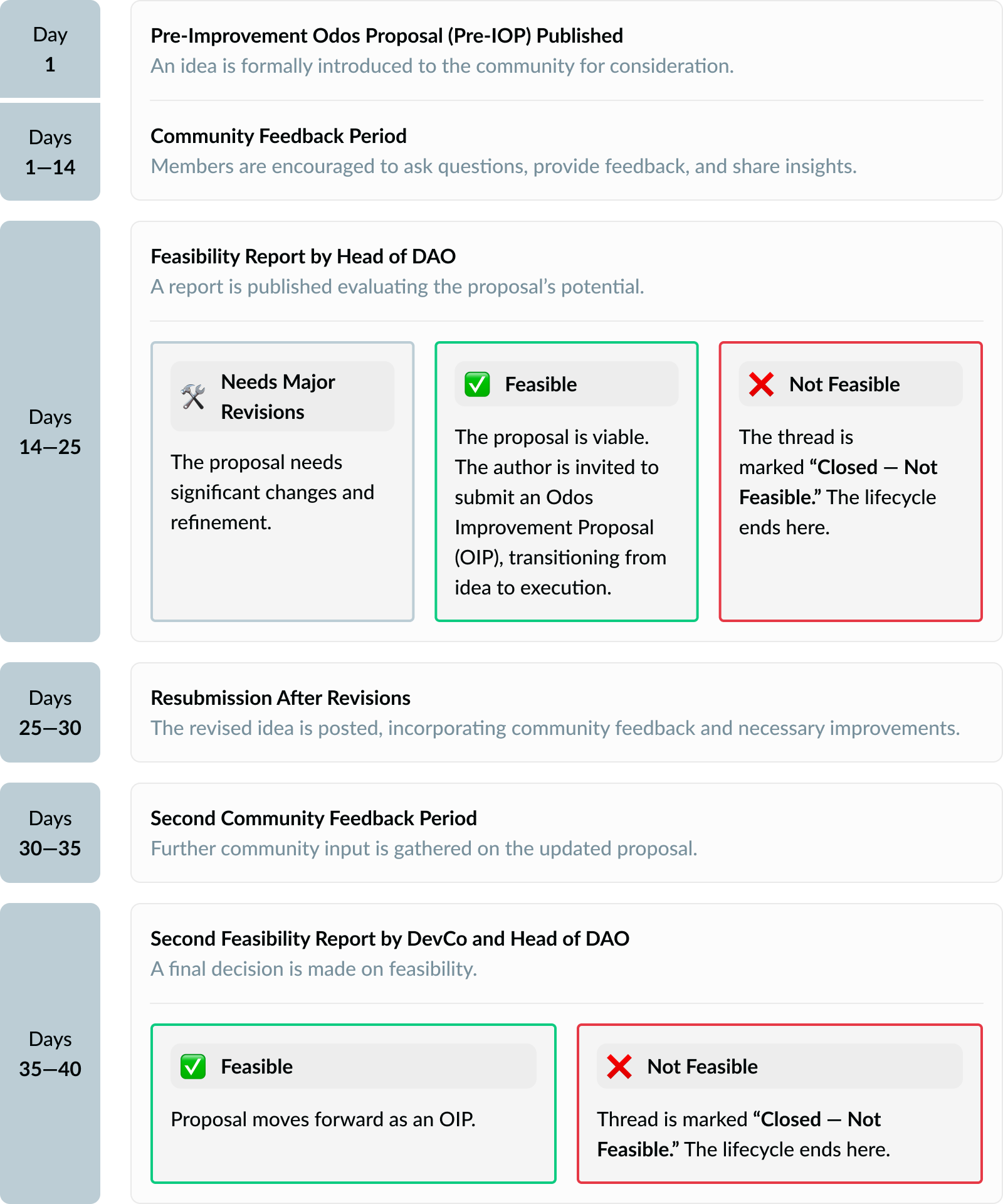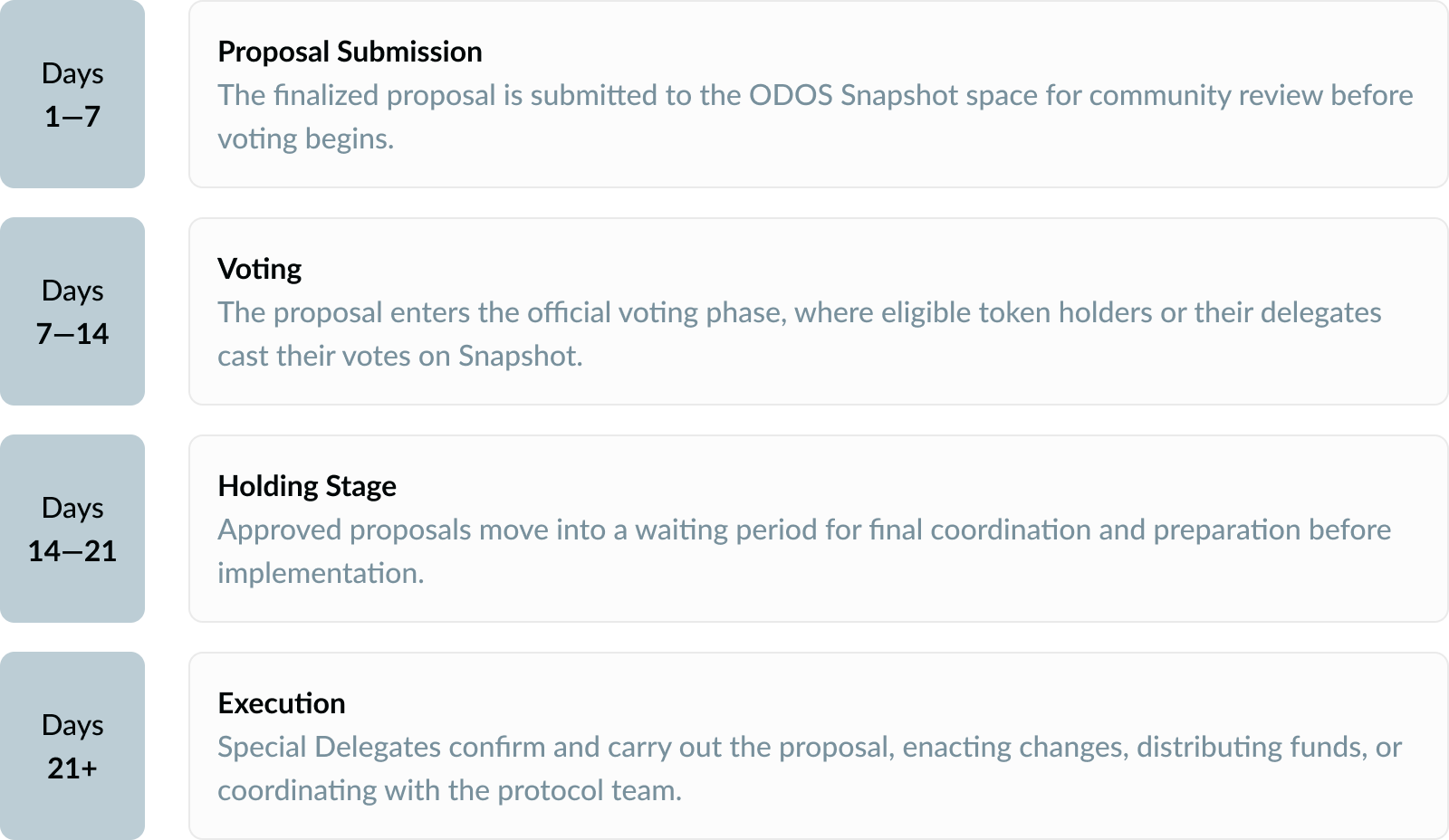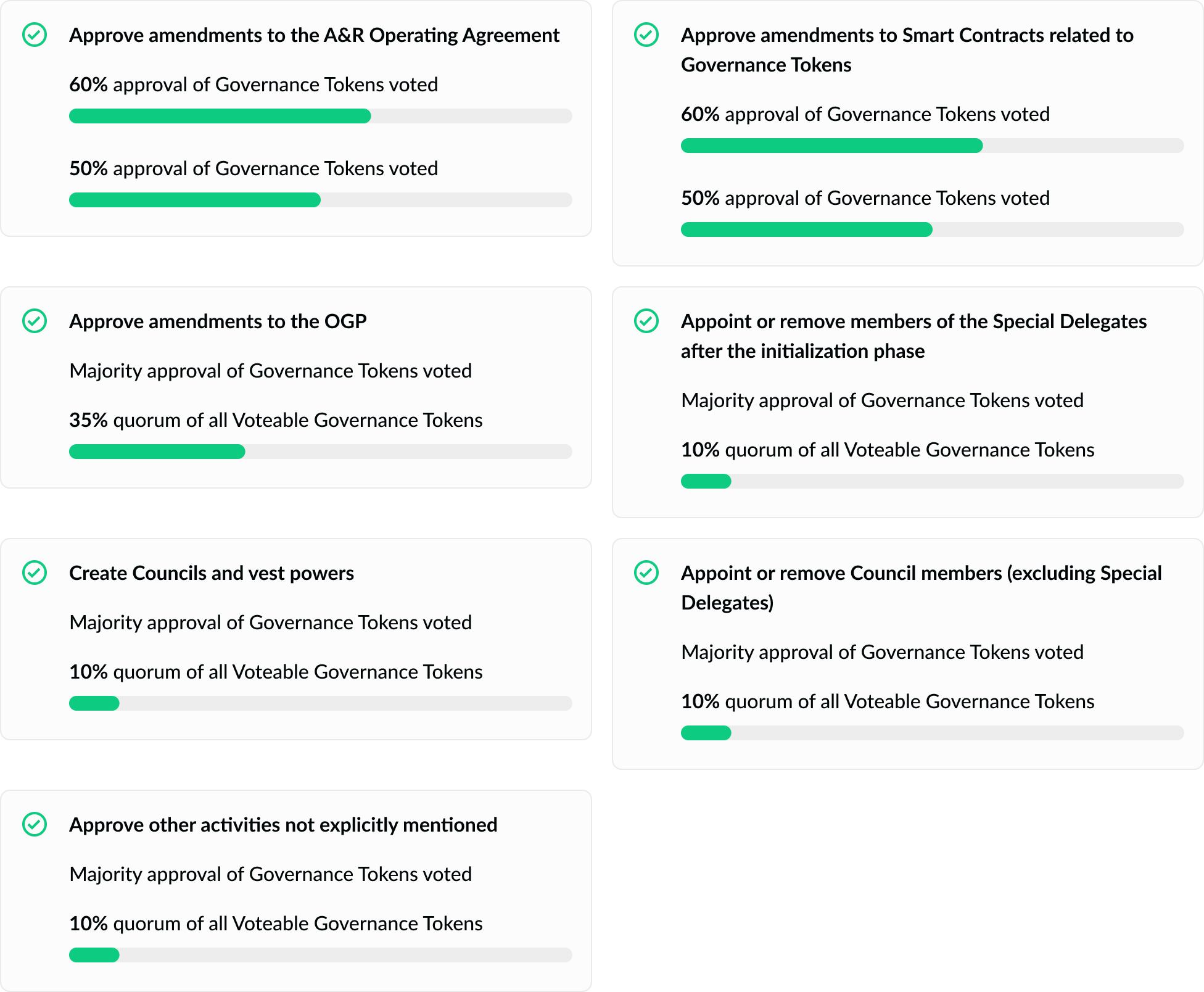Governance Road Map
Governance
What is the DAO?
The Odos DAO, formally organized as Odos DAO LLC, is a non-profit limited liability company and decentralized autonomous organization incorporated under the laws of the Republic of the Marshall Islands. As a decentralized governance hub, the Odos DAO is responsible for overseeing the management of the Odos DAO Governance Program (the “OGP”) and Odos Loyalty Program (the “OLP”), as amended from time to time.
DAO’s mission
ODOS DAO mission is to manage the systems that support its community and help drive long-term growth. It oversees governance by encouraging participation, creating clear decision-making processes, and ensuring the community has ownership over the DAO’s direction. It also manages rewards by running the Loyalty Program and turning user engagement into long-term alignment, strengthening the connection between contributors and the mission they share.
Governance Process:
The ODOS DAO governance process is designed to ensure that decisions are community-driven, transparent, and aligned with the long-term success of the protocol. Proposals follow a structured cycle that enables contributors to share ideas, gather feedback, and move forward with initiatives that benefit the ecosystem.
Governance Forum:
The proposal process begins in the ODOS Governance Forum where contributors share early-stage ideas using the Pre-OIP template below. This space allows the community to explore concepts together, ask questions, and provide feedback before a proposal is reviewed for feasibility. It’s where ideas take shape and alignment starts to build.
Pre-OIP Template
- Title:
- Short descriptive name of the idea.
- Summary:
- What are you proposing in 2–3 sentences?
- How Will This Proposal Benefit ODOS DAO?
- Why is it important?
- Will this proposal help to increase Odos dApp usage and adoption? If so, how?
- Will this proposal help to increase ODOS Loyalty Program and adoption? If so, how?
- How will it impact token adoption and utility? (Please provide quantifiable evidence if impact is expected).
- Proposed Solution:
- Describe proposal mechanics in detail (how it will work, specific steps required, and parties involved)
- What assumptions are used to make your proposal?
- What specific technical or operational changes are requested as a result of this proposal?
- Open Questions / Assumptions:
- What input / feedback do you request from DAO Lead, DevCo, or community?
Minimum Engagement Requirements:
To move forward in the governance process, proposals must demonstrate a minimum level of interest and participation from the community. ODOS DAO applies a tiered model to evaluate whether a proposal has received enough engagement to proceed to the feasibility review stage:
Engagement Requirements
| Tier | Description | Upvotes | Unique Comments | Timeframe |
|---|---|---|---|---|
| 1 | Operational or low-impact proposals | Minimum of 10 upvotes | At least 5 unique comments from different community members | All within 7 days of publication |
| 2 | High-impact or resource-heavy proposals | Minimum of 20 upvotes | At least 10 unique comments | All within 7 days of publication |
Only engagement on the ODOS Governance Forum will be considered valid. Proposals that do not meet these criteria will not advance to the feasibility review stage.
Proposal Lifecycle:
The following steps outline how proposals move through the ODOS DAO governance process, from the moment an idea is shared to its potential approval via Snapshot voting.
This process includes community engagement, a feasibility review by the Head of DAO (and DevCo if needed), and structured opportunities to revise and resubmit proposals. You can follow the full lifecycle in the diagram below.

If a proposal is marked as Feasible, it can proceed as a formal Odos Improvement Proposal (OIP). Below is how the OIP process unfolds—from submission to execution.
OIP (Odos Improvement Proposal)

The OIP stage is where an idea becomes a fully developed governance proposal, ready to be submitted for voting. This marks the formal transition from community discussion and feasibility review to an actionable, on-chain decision-making process.
The OIP should clearly outline the problem being addressed, the proposed solution, and the expected outcomes. To ensure consistency, all proposals must follow the official OIP Template below.
OIP Template
Use this template after your draft has undergone Pre-OIP Review.
Title: A clear, descriptive title. AuthorsNames and DAO forum handles of proposal authors. Proposal Type
- Partnership Proposal
- DAO Governance / Community
- Loyalty Program (Token)
- Other (specify) Abstract (TL;DR):
A 2–3 sentence summary of what is being proposed and why.
Problem / Opportunity:
What issue or opportunity does this proposal address? Why is it relevant now?
Proposed Solution:
What is being proposed in detail? What are the specific actions or outcomes?
Strategic Value to ODOS DAO:
Explain how this supports one or more of the following:
- Loyalty and Governance token adoption or value
- Increased Odos dApp trading volume
- Ecosystem growth
- Long-term network value
Expected Impact & Metrics
How will success be measured? Include measurable KPIs like:
- Token volume, Loyalty Program adoption metrics
- Odos dApp Users/transactions gained
- Treasury ROI / growth
- Ecosystem growth indicators Pre-OIP Review Summary
Filled out after review by Head of DAO / DevCo.
- Reviewers: [Name(s), role]
- Feasibility Feedback:
- Resource Constraints or Risks:
- Suggested Improvements:
- Green-lit for OIP Vote? [Yes/No]
Proposal Submission
Once the proposal is finalized, the author must submit it to the ODOS Snapshot space. This begins with a Pending phase lasting 7 days, giving the community time to review the final version, clarify any open questions, and prepare for voting.
Voting
After the Pending period, the proposal becomes Active and enters the official voting phase. Voting takes place on Snapshot and is open to all eligible token holders or their delegates.
The voting window will remain open for 7 days, unless stated otherwise in the forum. A proposal is considered approved if it meets the minimum quorum and voting thresholds defined by ODOS DAO governance. If those conditions are not met, the proposal is rejected, and its lifecycle ends there.
Holding Stage
If the proposal is approved, it enters a 7-day waiting period before execution. This period allows time for any final reviews, coordination, or preparation required to implement the decision.
Execution
After the waiting period, the proposal moves into the Execution phase. At this stage, the Special Delegates confirm the approval of the OIP and carry out its implementation. Depending on the proposal, this may involve enacting changes, distributing funds, or coordinating with the protocol team for follow-up actions.
Alternative Procedures
In exceptional cases where the standard governance process is unavailable or delayed, the Special Delegates may establish temporary alternative procedures to ensure continuity and responsiveness in DAO operations.
Need a clearer guide? For practical, step-by-step instructions, including how to write your proposal, meet engagement thresholds, navigate each stage, and proposals templates visit the ODOS DAO Governance Hub.
Voting Thresholds and Quorum
